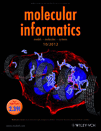A Kernel-Based Method for Assessing Uncertainty on Individual QSAR Predictions
Graphical Abstract
Abstract
The assessment of uncertainty attached to individual predictions is now a priority for sound decision-making in risk assessment. QSAR predictive uncertainty is affected by a variety of factors related to the quality of the training set data, the adopted statistical models, and the distance between the query chemical and the training set. We developed a method to quantify uncertainty associated with individual linear QSAR predictions that integrates both model and experimental error uncertainty and that defines an applicability domain based on the density of training set data. Our method is based on chemical spaces defined by latent variables identified by Partial Least Squares (PLS) regressions. The method provides a kernel regression estimate of the activity of interest as well as a measure of predictive uncertainty based on a mathematical estimation of the domain of applicability and on local propagation of uncertainty associated with training set data.





